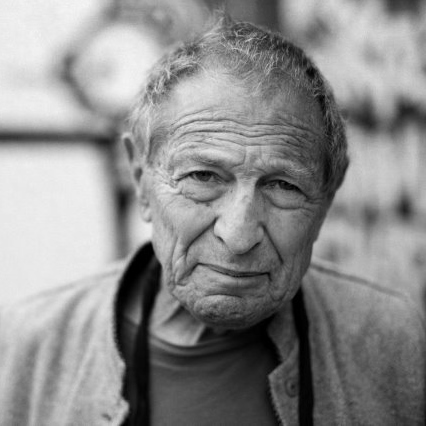click to dowload our latest edition
CLICK HERE TO SUBSCRIBE TO OUR NEWSLETTER


Published
7 years agoon
By
adminGILLIAN KLAWANSKY
Finally, executive producer and owner and director of the Goodman Gallery, Liza Essers has turned the camera on him in a documentary simply called Goldblatt.
“Goldblatt marks the moment when we finally turn the lens on this shrewd witness to social change in South Africa and document his remarkable contribution to photography,” says Essers.
A moving and confronting documentary, Goldblatt looks at the life and work of this celebrated South African photographer and it recently premiered at the Encounters South African International Documentary Festival to sold out theatres in Johannesburg and Cape Town.
Through the documentary, the now 87-year-old, often self-effacing, notoriously private and deeply introspective, questions his judgement, and discusses his work, the thinking behind his photography, and artistic struggles he still faces.
The film also delves into Goldblatt’s life growing up in the West Rand mining town of Randfontein and his interest in the miners who toiled around him, which influenced much of his work.
Speaking of his unique and effective approach to photography during the tumultuous years of apartheid, Goldblatt says: “Events themselves were to me much less interesting than the conditions that led to the events. I was looking obliquely at things.”
Reflecting this undeniably effective strategy, Goldblatt’s photographs, which are interwoven throughout the documentary, show striking images of people on both sides of the Struggle such as his famous portrait of a young black man wearing a white cast on each arm after being interrogated by police, or an Afrikaner mowing the lawn, a seemingly routine activity that had much deeper significance.
On apartheid, Goldblatt says: “I often didn’t know how to respond, I was in despair…”
One of his strategies was therefore taking pictures of white people in Boksburg on the East Rand, subconsciously hoping that whites would realise that his depiction of them wasn’t very complimentary.
“At best, I hoped that we might see ourselves revealed by a mirror held up to ourselves.”
Speaking of his black nanny who essentially raised him, Goldblatt says: “She was really another mother to me. To me, the ultimate indignity was when I, as a teenager, had to write a special pass [“a special”] for her to go from our house to her home in the township after curfew. I can’t tell you how ashamed I felt having to do that for her.”
Overall, the documentary reveals that no matter how acclaimed an artist Goldblatt may be, the struggle of reconciling himself to social injustices and to see the same things through “new eyes”, is one that is never resolved and keeps him working.
This, despite the despair this sometimes brings – with numerous scenes of the photographer placing his head in his hands as he battles his demons and tries to find a fresh perspective through the lens. He also speaks of his fear of “the act of dying” and how he envies people who are deeply religious who find solace in their faith when facing death. “I think that we’re either alive or we’re dead – there’s nothing in between,” he says.
Co-produced by Essers and Josh Ginsburg and directed by Daniel Zimbler, Goldblatt is the first-ever feature-length documentary on one of South Africa’s most prolific working photographers who has two current exhibitions in British prisons and a retrospective at the Centre Pompidou in Paris scheduled for 2018.
In addition to intimate discussions and photographic journeys with the man himself, it also includes commentary from artist William Kentridge and late author Nadine Gordimer.
In getting to know the man behind the lens, producers also speak to Goldblatt’s wife Lily, who still keeps her husband on his toes, revealing that he jokes “I’m an internationally renowned photographer” to get out of arguments.
Goldblatt offers a captivating and enlightening look at an undeniably gifted but often conflicted artist, who despite his fears and challenges, always maintains his good humour – with a smile that visibly lights up his face – and a love for the South African landscape as he sees it.
For Essers, her close relationship with Goldblatt was also a driving force behind the making of the documentary.
“David is family to me,” she says, “I love spending time with him. I consider him to be one of the most significant contemporary photographers of our time. Over the decades, he’s produced many of the iconic images of apartheid-era South Africa, which have been seared on our nation’s conscience.
]”He continues to photograph South Africa… questioning values. I feel massively privileged to represent him at the Goodman Gallery.”
